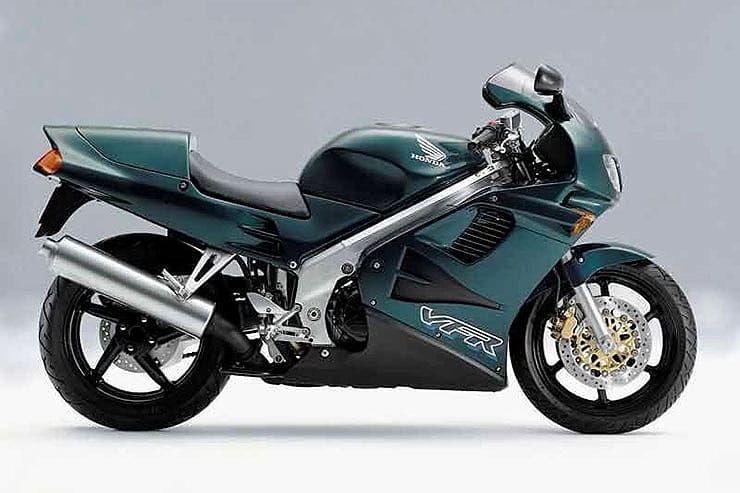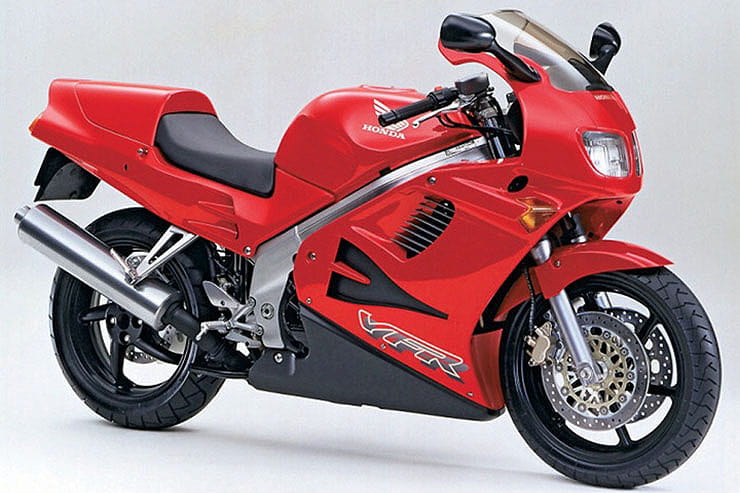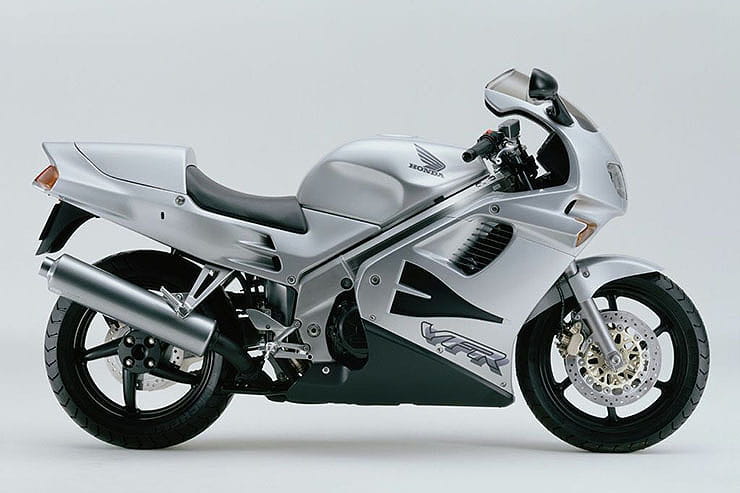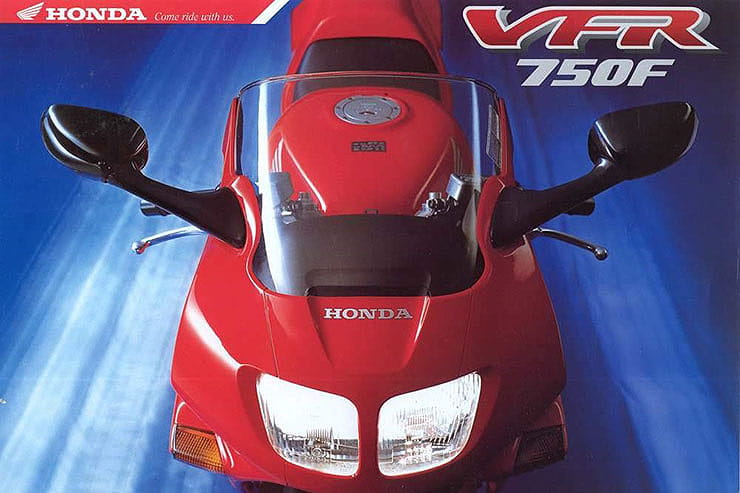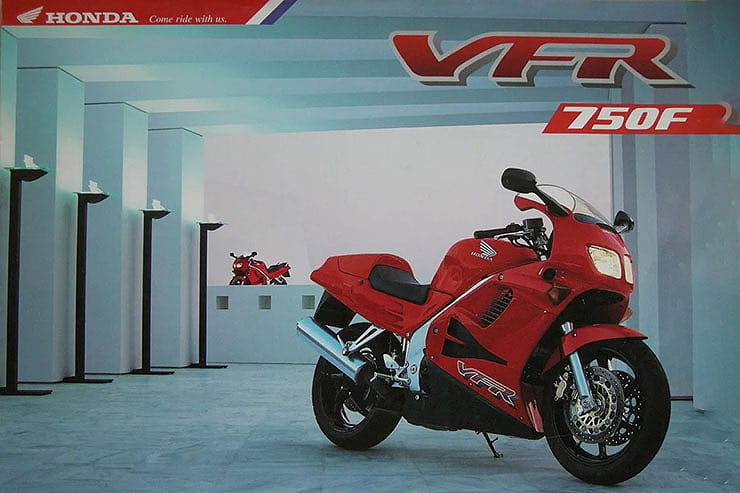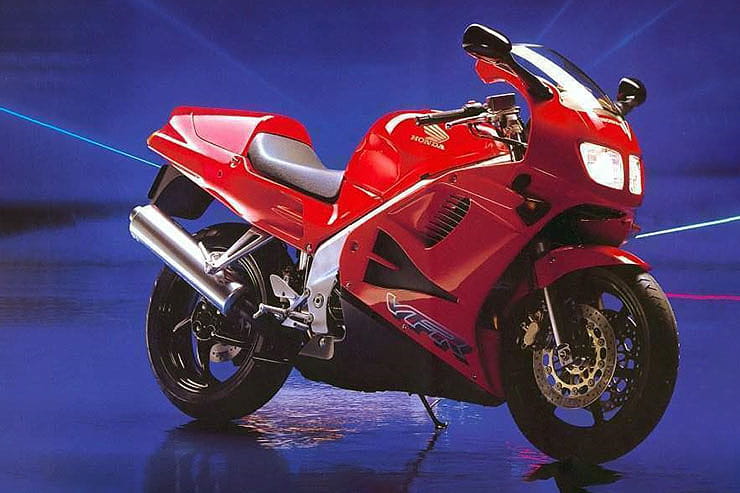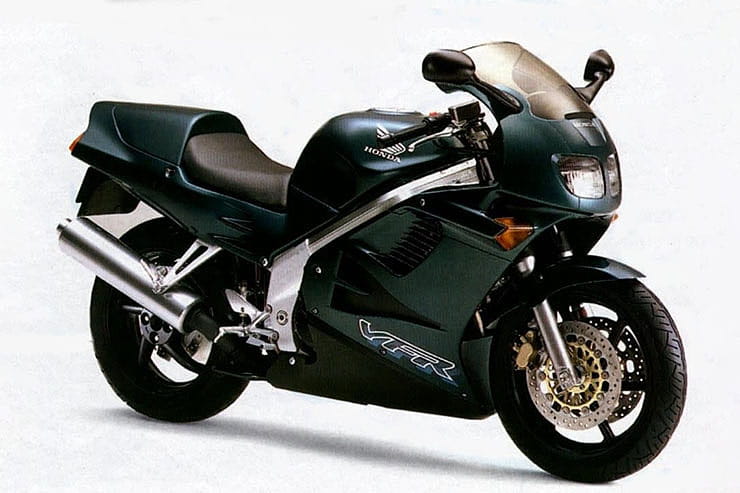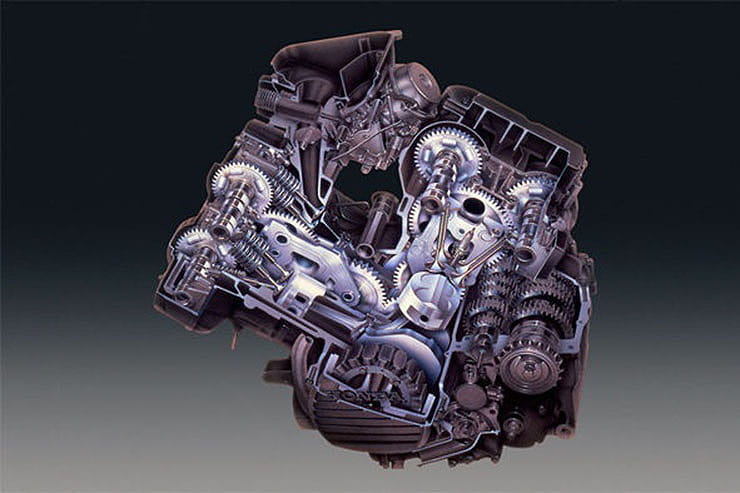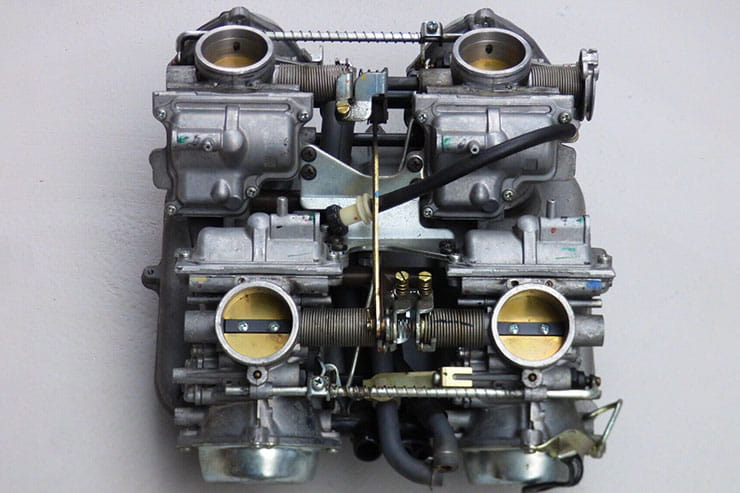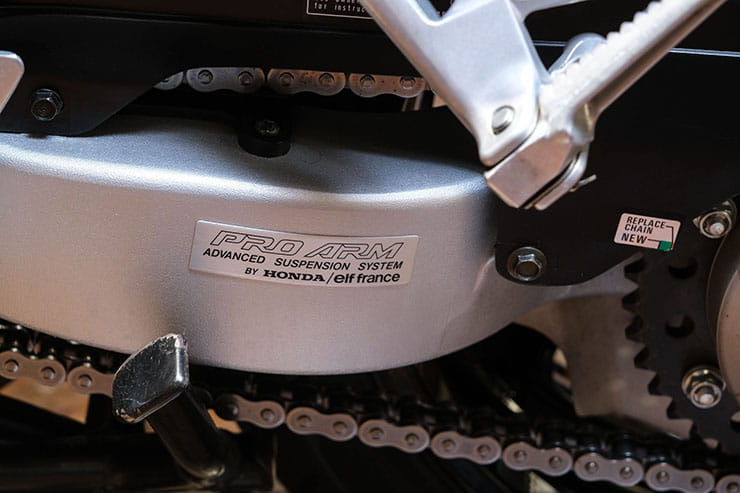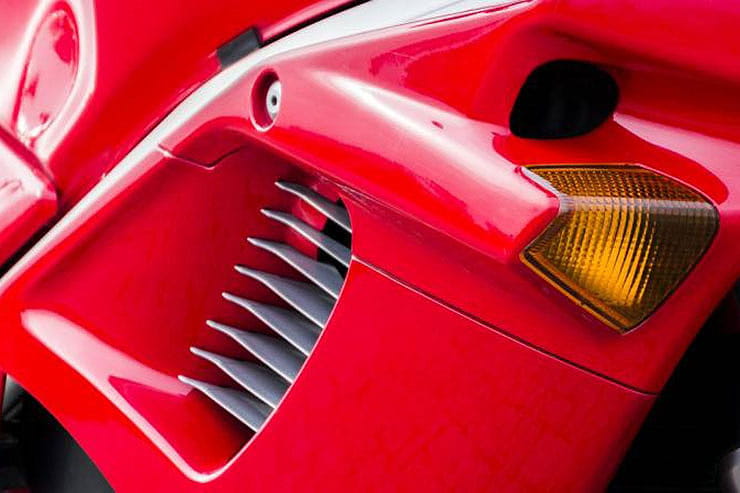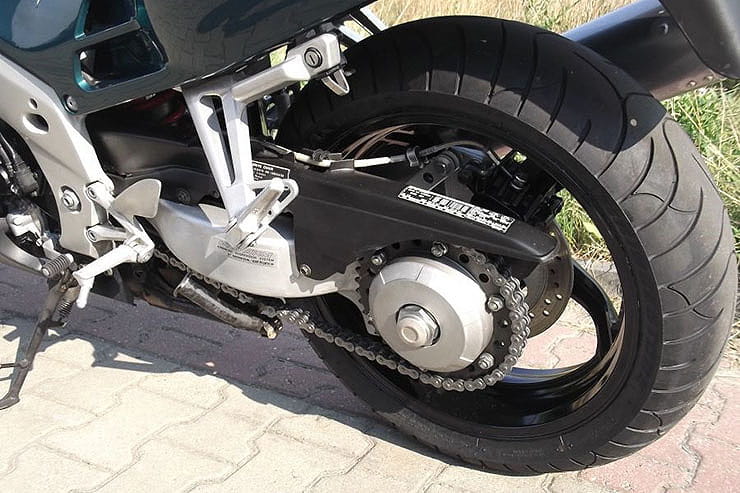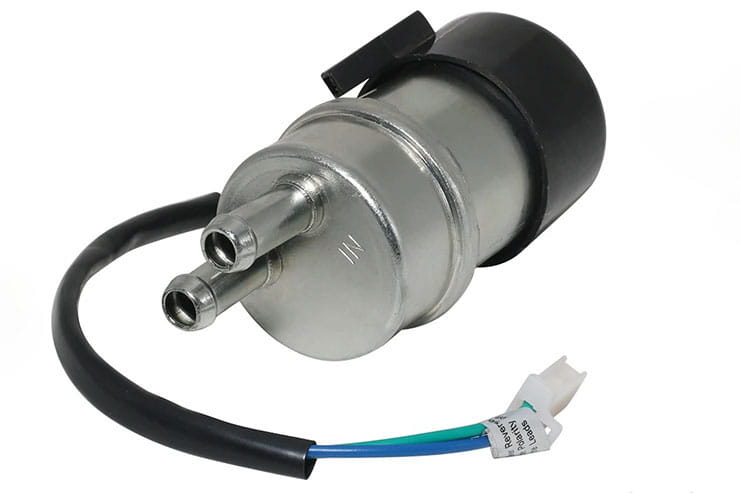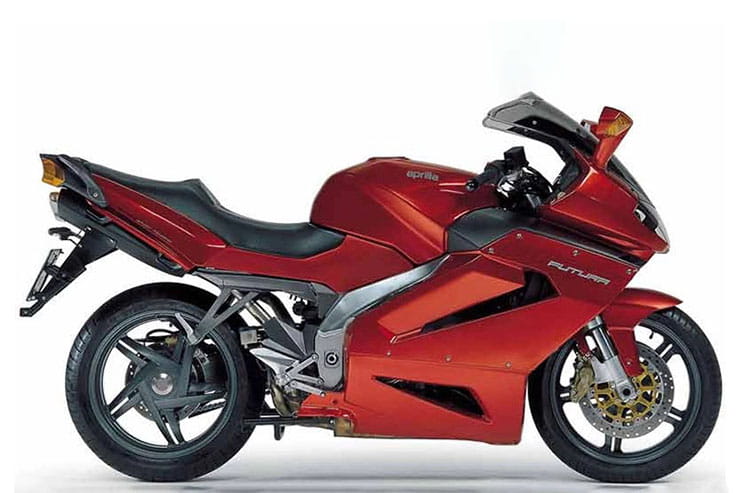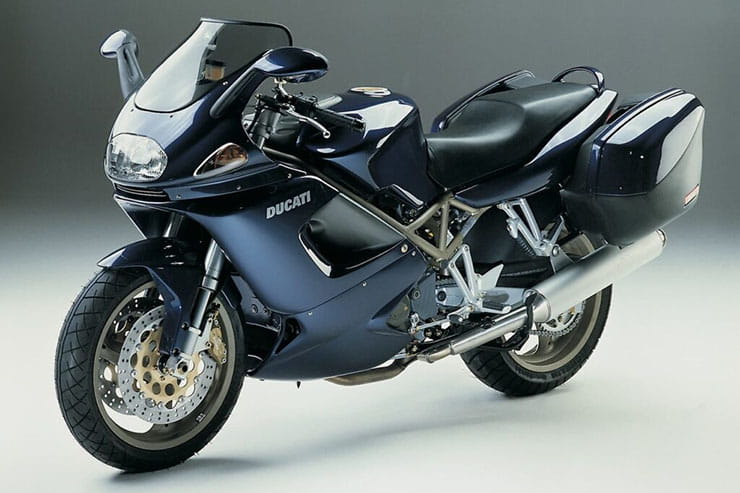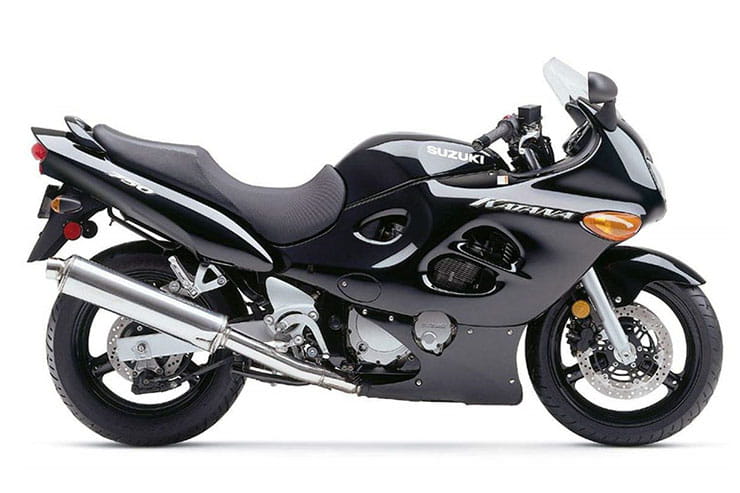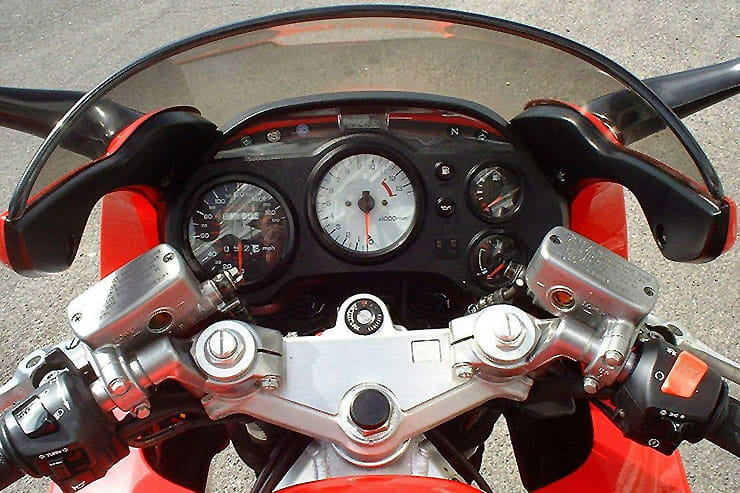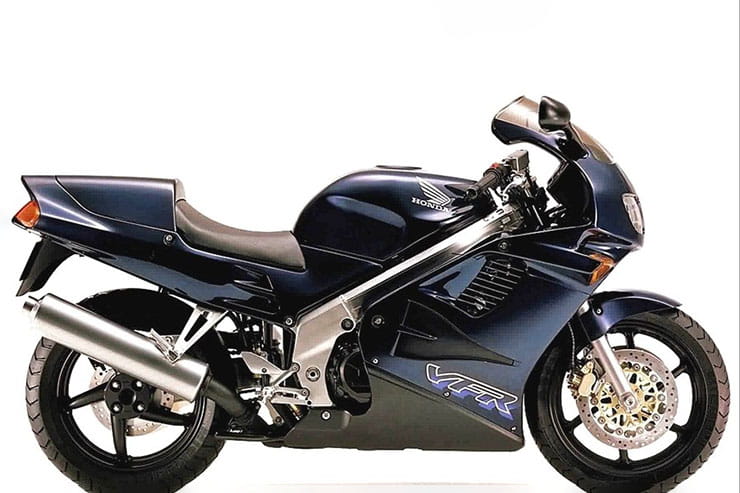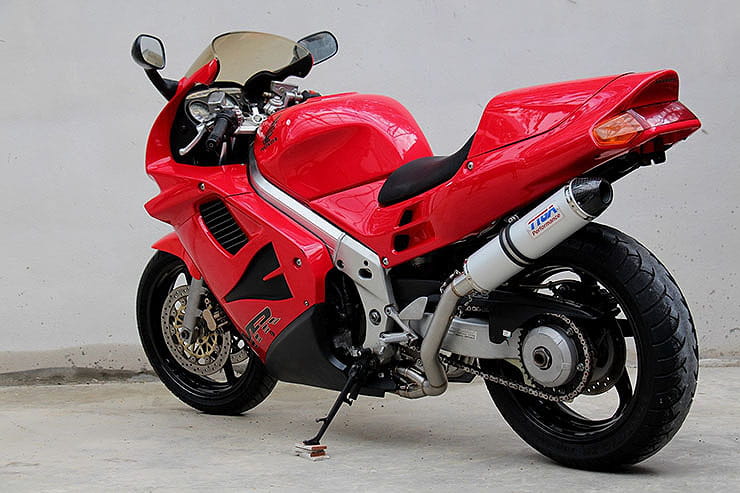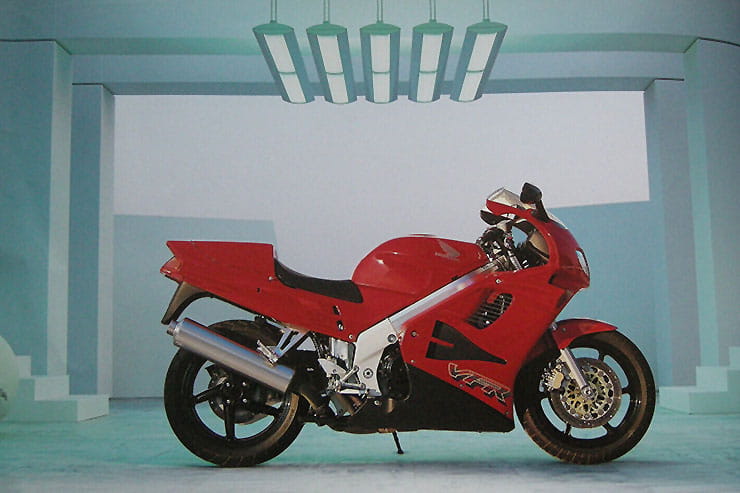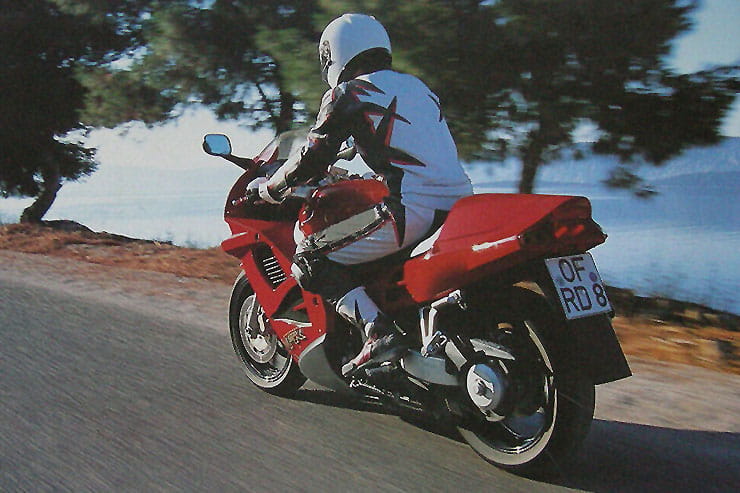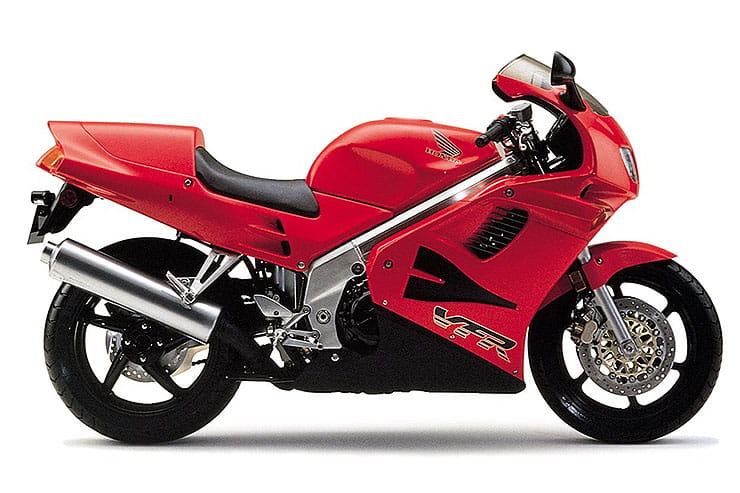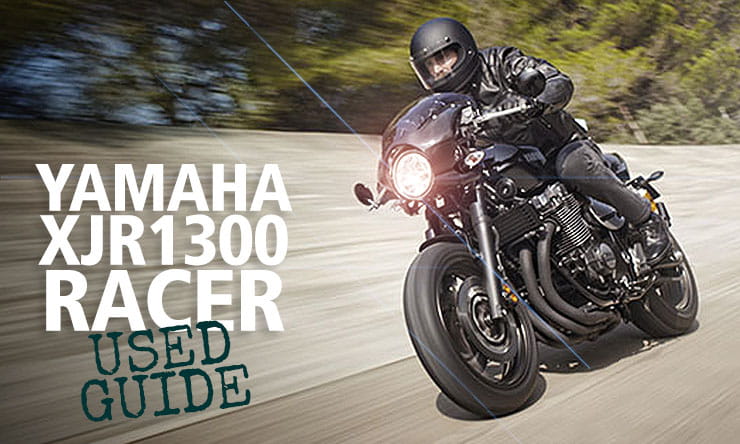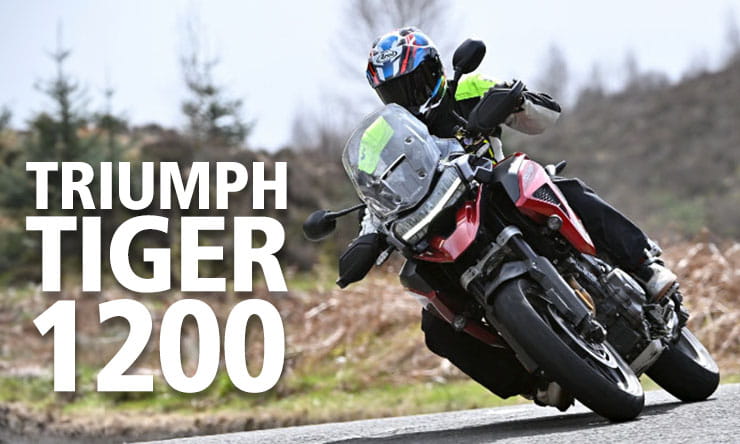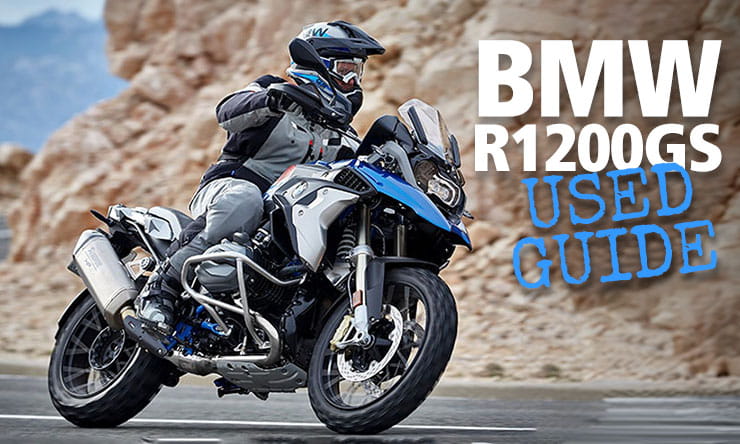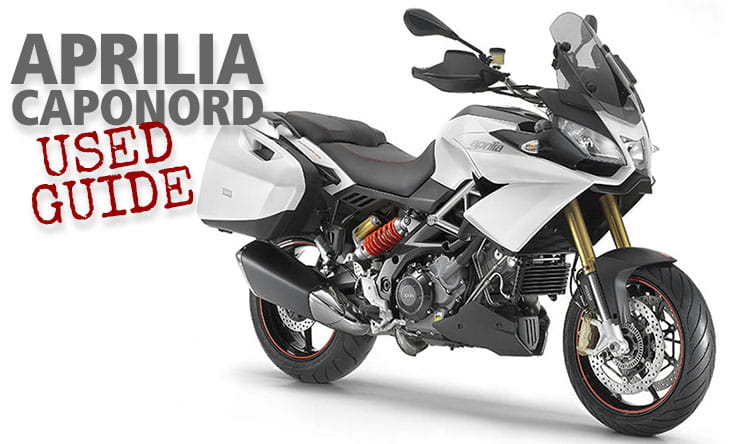Price: £2000-£4200 | Power: 105bhp | Weight: 209kg | Overall BikeSocial Rating: 4/5
Honda’s VFR750F is one of the greatest all-rounders ever built. Massively over-engineered, characterful, engaging to ride, beautifully put together, and able to turn its wheels to almost every discipline – from commuting and touring to trackdays and two-up, the VFR’s enduring appeal sees many owners unwilling to swap their V4 for anything else.
The 1994 RC36-2 was the fourth and final incarnation of the VFR750F, which was superseded in ’98 by the fuel-injected VFR800, a bike many 750 owners feel isn’t as good as the machine it replaced. Right from its original launch in 1986 the VFR750F was always an all-rounder with sporting aspirations. The first RC36 model, the 1990-1993 FL-FP, pushed further into sports touring territory with a plusher ride and better weather protection, but the second generation RC36 – our focus of this buyers’ guide – proved leaner, more powerful, more agile and easier to hustle without losing its do-it-all DNA.
Indeed, for many, the final VFR750F is the finest all-rounder ever built – an accolade underpinned by the bike’s enduring appeal. The RC36-2’s blend of 150mph potential, V4 grunt and character, supreme comfort and light responsive handling represent THE sweet spot in all-round sports touring performance. Late VFRs have aged gracefully in terms of style, too. The look of the bike borrowed heavily from Honda’s ground-breaking NR750 – the louvred fairing vents, twin separated headlamps, two-tone red/black colour, single-sided rear end, curvaceous bodywork, and even the instruments with their white tacho and black rounded dials. The RC36-2 is Honda at its very best.
VFR owners know how good their bikes are, and they treat them accordingly. Fastidious and comprehensive service history is the norm, as are considered extras and a through knowledge of the model’s few weak points – usually all rectified or sorted. Despite the VFR’s obvious excellence and strong appeal, prices remain temptingly affordable, even for absolute minters; upwards of £2K buys a well maintained example, £4000 an absolute beauty. So isn’t it time you sampled one the greatest sports tourer ever built?
Honda VFR750F (1994-1997) Price
The 1994-1997 VFR750F represents the second and final incarnation of the RC36 model. The first RC36, the 1989-’93 FL-FP, was heavier than the original VFRs with a greater bent towards touring and comfort. With the FR-FV Honda went back to the 750F’s roots, creating a sharper, lighter machine that married sports ability with all-round practicality. Many consider it to be the ultimate VFR750F.
Although the model sold over a four-year span before being replaced by the not so loved VFR800, FR-FV values depend more on condition, useful extras, and mileage, rather than year of registration, so the values below cover the whole run of RC36-2s.
1994 VFR750F-R: Second generation RC36 model. All-new lighter aluminium beam chassis and single-sided Pro-Arm rear end. Power up by 3bhp over previous model. Styling cues taken from NR750, tank size increased from 19 to 21 litres. At 209 kilos, 7kg lighter than the 1990-’93 RC36 and nimbler as a result. Colours: red, black, blue.
1995 VFR750F-S: No technical changes. Colours: red, black, silver.
1996 VFR750F-T: No technical changes. Colours: red, blue, silver.
1997 VFR750F-V: No technical changes. Colours: red, blue, green.
VFR750FR-FV values:
- Rough: £800 - £1500
- Tidy: £2000 - £3500
- Mint: £3700 - £4200*
*Top Tidy and Mint prices for low mileage examples with desirable, value-adding extra such as quality hard luggage, heated grips, aftermarket shock, touring screen etc, plus all original parts.
Pros & Cons
- Outstanding build quality
- Punchy V4 engine
- Brilliant all-rounder
- Starting to feel old, especially the brakes
- Electrical gremlins
- Newer, more powerful, better sports tourers are now available
Honda VFR750F (1994-1997) Engine and Performance
The VFR’s engine was massively over-engineered from its inception. It had to be after the reputation tarnishing issues with Honda’s first 750 V4s, the VF750S and F. Indeed, the first VFR was make or break for Honda’s entire V4 project. Had it proved problematic the whole configuration would have sunk without trace, so the first RC24 had to be perfect.
Honda threw the proverbial kitchen sink at the bike, and the engine in particular. Legend has it that Honda lost money on every VFR sold because the R&D and production costs were so high. The basic 90°, DOHC, 16v V4 layout remained true throughout the VFR’s production run, right down its 70 x 48.6mm bore and stroke producing 748cc. The unit’s purring sophistication comes in part from gear-driven cams (a technology taken straight from Honda’s racing division and used only once previously on a road bike, the VF1000R), used to prevent a rerun of previous camchain tensioner problems. You can hear the gears wiring at low revs.
The RC36-2 gained 3bhp over the previous model thanks to a slight hike in compression, up from 10.0:1 to 10.5:1, a redesigned exhaust system and different Keihin carbs, but the VFR’s strength never did lie in outright numbers. The way this 750 delivers its 105bhp is key. The V4 layout and 180° firing order gives the engine the bottom grunt and feel of a V-twin, while at high rpm it’s happy to spin onto 10,000rpm and beyond like an inline-four, with a generous slice of midrange stomp sandwiched between the two ends for good measure.
Of course there are punchier, more powerful sports tourers on the market today, but the VFR still makes a surprisingly effective and rapid road tool in the right hands. And in terms of reliability, there’s a good reason why used VFR engines are so damn cheap – nobody needs then because they never go pop thanks to all that over-engineering.
Honda VFR750F (1994-1997) Handling & Suspension
The RC36-2 got a completely new chassis. A lighter, stiffer aluminium beam frame, a redesigned single-sided Pro-Arm (developed from endurance racing for quicker wheel changes but actually very handy in the real world because chain adjustment is a doddle), new 5/6-spoke wheels, updated discs, preload adjustable forks, a three-litre larger fuel tank and an overall reduction in weight of 7kg.
Handling is lighter, sharper and more accurate than the previous RC36, much to the delight of sportier minded VFR owners who prized the old RC24’s attitude. Comfort – with above-yoke mounted clip-ons, a generously padded 820mm seat and relaxed footpeg positioning – is a given, but there’s just enough forward lean in the ergonomics to make spirited riding feel natural. Pillion accommodation is excellent too, with foldable grab rails that tuck discreetly away when not in use.
Ride quality is a VFR strong point. The Showa suspension set up provides a pleasing balance between comfort and feel at both ends (provided the damping’s not gone south after excessive mileage), and that’s part of the reason why these Hondas are such a pleasure to ride on the road.
Braking is good rather than outstanding – 2-pot calipers grip 296mm discs up front, with a single 256mm disc and 2-pot caliper as back up at the rear. But everything feels good on a VFR, from the chassis feedback and engine’s natural thrum to the outstanding finish of the cockpit which is neatly faired in and framed by a beautifully milled top yoke and bars. Whether touring two-up, motorway cruising or back lane scratching a VFR750F is a great place to be.
Honda VFR750F (1994-1997) What to look for
Electrics: Overall build quality is excellent, but some aspects of the VFR’s electrical system can cause issue. Reg/recs fail with tedious regularity – many owners claim the OEM part is not as good as an aftermarket unit; Electrex World do a quality replacement for £78. Generators can prove problematic, too. Electrex World can also help there, again for £78. Give any prospective purchase’s electrics a good look over, especially if the bike’s running extras like heated grips. Moisture can get into the switchgear, leading to failure, so look for a bike that’s been stored under cover.
Suspension: Even the newest VFR750Fs are now 25 years old and given that these bikes are often used for luggage-laden touring and two-up rides the stock suspension will be past its best, even on low mileage examples. A quality rear shock is an excellent investment, if it’s not been done already. British firm Nitron offer a range of options, starting from £550. A fork upgrade (to cartridge internals) will also transform the handling; budget £350-plus. Also check the rear suspension linkages – regreasing is vital and often missed.
Brakes: The front 2-pot calipers are adequate if kept in fine fettle – ask any seller when they were last stripped, cleaned and fitted with new seals and/or pistons. Braided hoses improve the set-up’s performance (Hel Performance make quality replacement lines from £80 for the VFR). Mileage takes its toll on the discs. Check for cracking on the front discs’ swept surface; EBC replacements can be had for £105 from ebcbrakeshop.co.uk.
Exhaust: Honda’s excellent build quality stopped short of fitting a stainless steel exhaust system. The mild steel header pipes rot over time, especially where the front and rear downpipes join, so if a prospective purchase is still wearing its OEM system expect to have to replace it and budget accordingly. Black Widow exhausts do a complete stainless system, including silencer, for £370.
Extras: Always worth having on a sports tourer. Quality hard luggage and racks, like Givi, add value, as do heated grips, touring seats, uprated suspension and full stainless systems.
Fuel pump: Modern ethanol-rich unleaded is the enemy of every fuel system. It’s hygroscopic, so attracts moisture which can ruin fuel pumps, pipes, carbs and more. If a VFR’s been sitting for a while, particularly if the tank’s half full and the carbs haven’t been run dry, idle jets can block, making starting and running a hit and miss affair. Replacement fuel pumps are £200 for Wemoto.
Aprilia RST1000 Futura, 2000 | Approx Price: £1600-£3200
Power/Torque: 113bhp/70.8lb-ft | Weight: 210kg
Short-lived Aprilia sports tourer, obviously inspired by the VFR. Powered by a 1000cc V-twin. Plenty of stomp, but more tourer than sports machine. Distinctive styling didn’t help sales, so it was quietly dropped from the range. Cheap though, and the Rotax/Aprilia engine is a belter, so worth a look if you fancy something different.
Ducati ST2, 1998 | Approx Price: £2300-£3300
Power/Torque: 83bhp/62lb-ft | Weight: 212kg
944cc air/oil-cooled, 2-valve Desmo twin with sports touring aspirations. Sweet handling and nicely specified with Brembo brakes, Showa suspension, and fuel-injection. Decent weather protection and pillion accommodation too. Quickly replaced by the liquid-cooled, 4-valve ST4. More character than the VFR, but not as well finished or capable.
Suzuki GSX750F, 1998 | Approx Price: £900-£2000
Power/Torque: 93bhp/49lb-ft | Weight: 211kg
Budget sports tourer with dubious styling, soft suspension, and a detuned GSX-R engine. Excellent value for money if funds are tight or you’re after a cheap run around, but lacks the Honda’s class, character and aplomb. If it has to be a Suzuki, look at an RF900R instead – they’re better in every way.
Honda VFR750F (1994-1997) Verdict
Ignore the VFR’s age, it’s still an amazing all-rounder. Quite why this V4 hasn’t risen to the lofty heights of modern classic royalty, like its race-derived RC30 stablemate, remains something of a mystery, because the VFR750F RC36-2 is one of the most polished packages to emerge from Japan on the last 30 years.
Fortunately VFRs are still as affordable as they are brilliant – even for those on a limited budget. And what issues they do suffer from are well known and easy to rectify.
Honda VFR750F (1994-1997) – Technical Specification
|
Original price
|
£7455
|
|
Current price range
|
£2000-£4200
|
|
Capacity
|
748cc
|
|
Bore x Stroke
|
70mm x 48.6mm
|
|
Engine layout
|
Liquid-cooled, DOHC, 16v, 90° V4
|
|
Power
|
105bhp (76.6kW) @ 10,000rpm
|
|
Torque
|
53.5lb-ft (72.6Nm) @ 8000rpm
|
|
Top speed
|
149mph
|
|
Transmission
|
6-speed, wet, multiplate clutch, chain final drive
|
|
Average fuel consumption
|
42 mpg
|
|
Tank size
|
21 litres
|
|
Max range to empty (theoretical)
|
193.6 miles
|
|
Reserve capacity
|
n/a
|
|
Rider aids
|
none
|
|
Frame
|
Aluminium beam
|
|
Front suspension
|
41mm telescopic forks
|
|
Front suspension adjustment
|
Adjustable preload
|
|
Rear suspension
|
Pro-Link monoshock
|
|
Rear suspension adjustment
|
Adjustable preload, rebound damping
|
|
Front brake
|
2 x 296mm discs, 2-pot calipers
|
|
Rear brake
|
256mm disc, 2-pot caliper
|
|
Front tyre
|
120/70 ZR17
|
|
Rear tyre
|
170/60 ZR17
|
|
Rake/Trail
|
29°/ 99mm
|
|
Dimensions (LxWxH)
|
2100mm x 720mm x 1185mm
|
|
Wheelbase
|
1470mm
|
|
Ground clearance
|
130mm
|
|
Seat height
|
800mm
|
|
Dry weight
|
209kg
|
Looking for motorcycle insurance? Get a quote for this motorbike with Bennetts bike insurance



